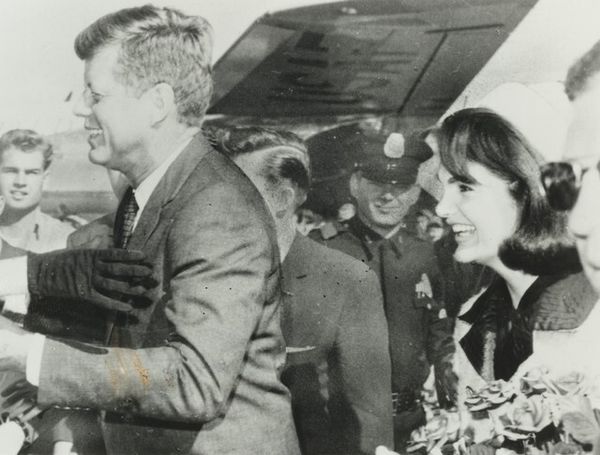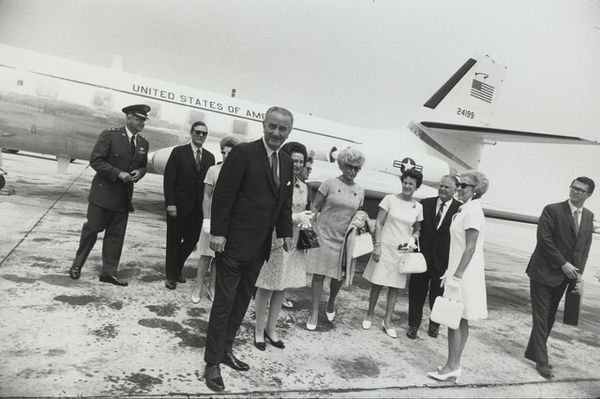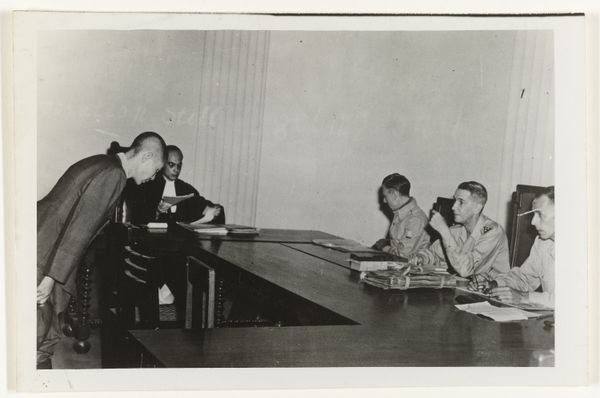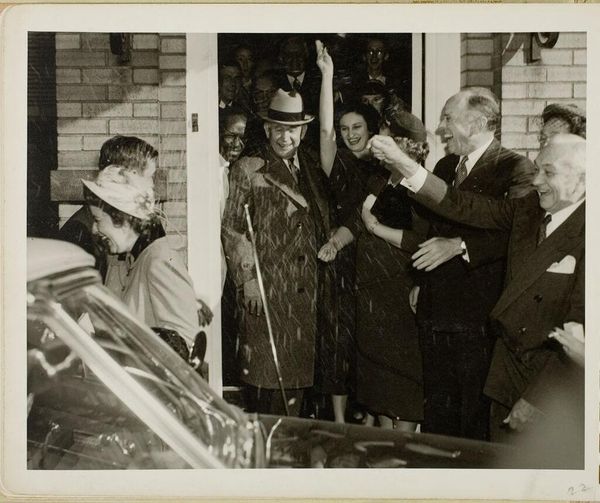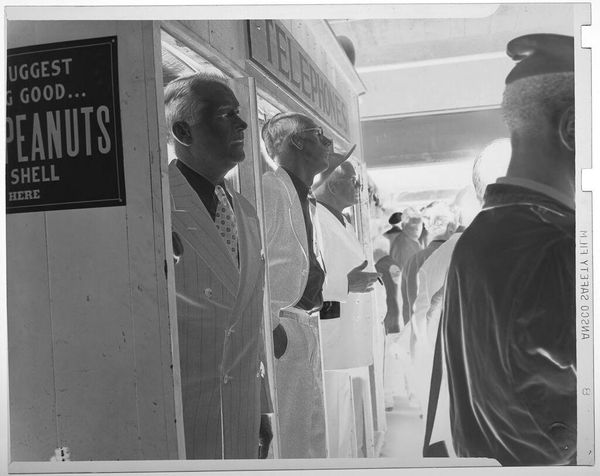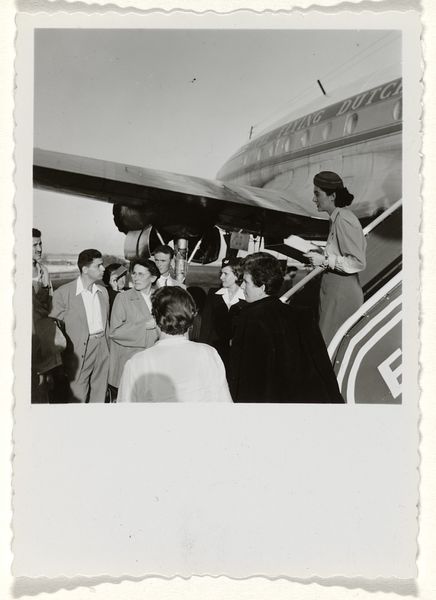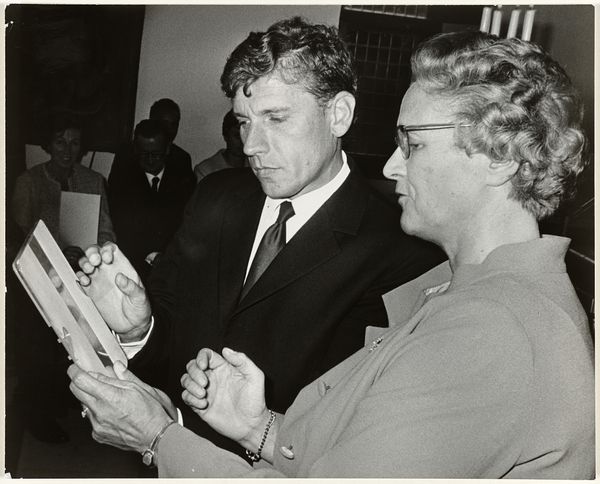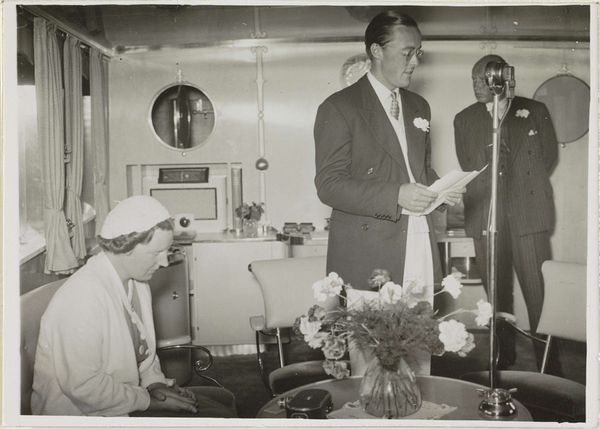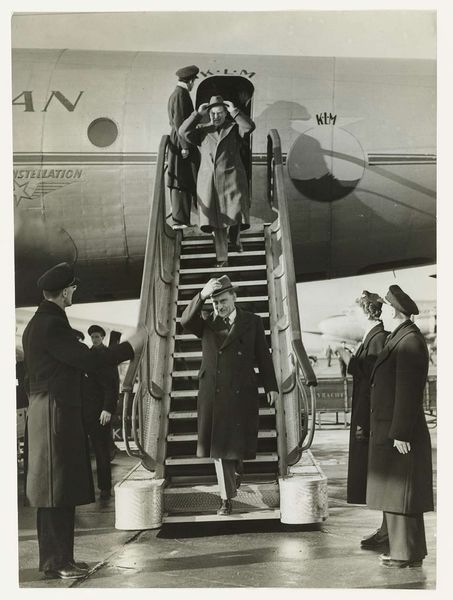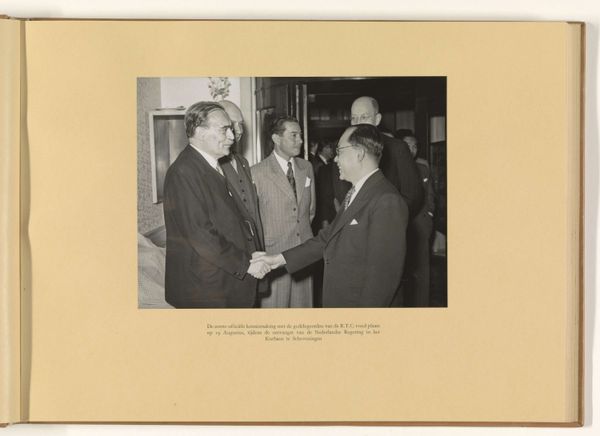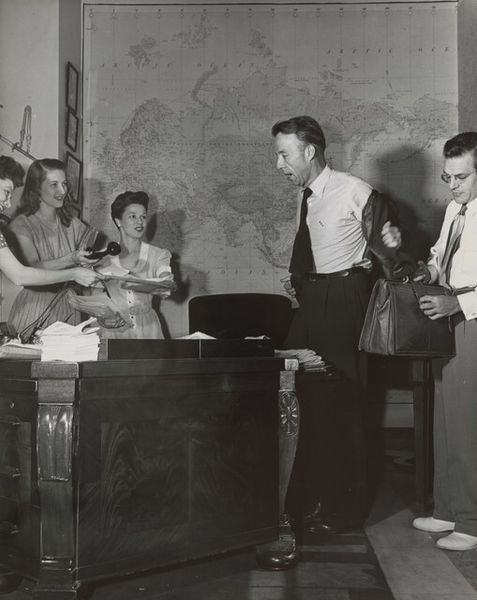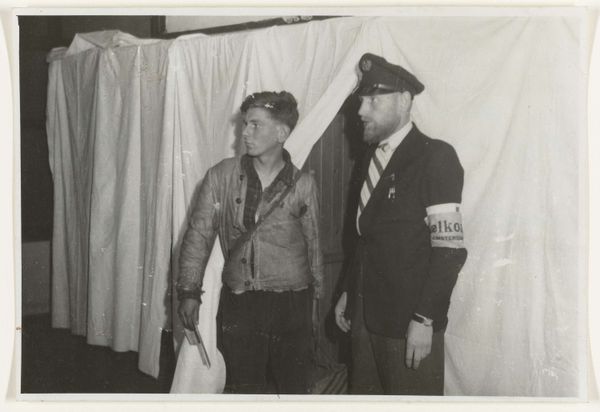
photography, gelatin-silver-print
#
portrait
#
photography
#
historical photography
#
gelatin-silver-print
#
history-painting
#
modernism
Dimensions: image: 17.4 × 21.4 cm (6 7/8 × 8 7/16 in.) sheet: 18.8 × 21.7 cm (7 3/8 × 8 9/16 in.)
Copyright: National Gallery of Art: CC0 1.0
Curator: This is a gelatin-silver print captured by Cecil Stoughton on November 22nd, 1963. It’s titled "Lyndon B. Johnson Presidential Oath of Office." Editor: My first impression is how claustrophobic it feels. Everyone is crammed into a tight space. The harsh contrasts amplify the sense of tension. You can almost feel the weight of history in that small, crowded airplane cabin. Curator: Indeed. Stoughton, as the official White House photographer, documented this moment of profound transition following President Kennedy's assassination. The photograph encapsulates a key point in American history. It is important to understand that access to this type of event would have been heavily mediated, therefore we must question Stoughton's point of view. Editor: I find the materiality of the gelatin-silver print significant. This method allowed for mass reproduction. So this image, this singular moment, could be disseminated widely, shaping public perception and contributing to the construction of Johnson's presidential image. Look at the grain. There are so many layers here, and it just underscores the complex historical circumstances. Curator: Absolutely. The photograph, due to its immediacy, took on a monumental role. It helped to transition the narrative, presenting a new, if somber, image of American leadership amidst national mourning. The setting in the airplane, however unorthodox, emphasized a commitment to stability and continuity. The photograph served a very specific political and social function in this moment. Editor: And the image quality itself, that gritty black and white. It evokes a documentary aesthetic that, although carefully controlled, lends it an air of raw, unvarnished reality. It belies how carefully produced and distributed this image really was. Did the material limit his access in some way, for example, with bulkier camera equipment? Or did it provide other affordances to the photograph's creation? Curator: Those constraints and the decisions they forced really contributed to how history was publicly perceived, or made knowable, through that image. Editor: Yes, indeed. Considering the context, the materials used to record it, and disseminate this photo, illuminates not just the event, but the way power represents itself. Curator: A perspective I find incredibly astute given the circumstances, even decades later. Editor: Thank you. I now have a new perspective to carry forward.
Comments
No comments
Be the first to comment and join the conversation on the ultimate creative platform.
